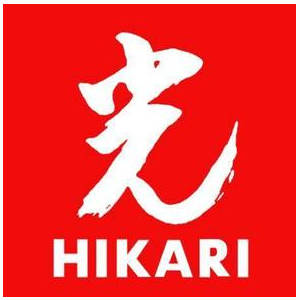Holding scissors properly!
Correct Scissor-Holding Technique.
One of the first things a young hairstylist should learn is how to properly hold his/her scissors. For maximum control over your haircuts, the longer life of your scissors, your customers’ safety as well as the long-term health of your body and subsequently your career, take the time to learn and master the correct scissor-holding technique. Scissors perform their best when the thumb only moves in an up or down direction. With the thumb controlling the moving blade, we use vertical movement to affect the cut. The thumb movement puts only one of the handles in motion. This technique allows the pressure generated from the pivot design and the sharpness of the blades to do all of the work. It also keeps the hands and finger relaxed and in control, giving you more agility and radial freedom to move throughout the haircut. The sooner this is learned—and mastered—the easier it is to cut hair. If you missed learning this skill early in your career; you can always learn the proper technique, regardless how long it’s been since you attended school. Learning and perfecting this skill takes a lot of practice so give yourself several weeks to master it.
Relaxed with a slight bend at the knuckle, only the top blade of the scissors should be moving when opening and closing the blades.
Practice these five steps:
- Keep your thumb knuckle slightly bent at all times. This enables your hand and wrist to relax and minimizes the tendency to apply thumb pressure.
- Insert only the tip of your thumb into the thumb hole. This will maximize your range of motion and protect you from applying HTP (Horizontal Thumb Pressure). To guard against inserting your thumb too far through the hole, it may be helpful to put a finger ring in the thumb hole.
- Using the tip of your thumb, while bending the knuckle, move the scissor handle in an up and down direction only. Be careful not to push or press the handle in any other directions or angles. Apply pressure with your middle finger and forefinger, and rest your pinky on the lever or on top of the finger hole.
- Ensure the guide blade (the scissor handle with the finger hole) does not move up or down; it should be completely still. Keeping your hand still while just moving your thumb applies the necessary pressure to the cutting blade so that the scissor can cut properly.
- Let your hand be at ease supported by the contours of the handle. Refrain from gripping, pushing, pulling, or pressing the scissor with force as this will restrict your freedom of movement and inhibit the scissors’ natural cutting stroke.
TIP – Scissor Finger Inserts help fit the scissor to your hand, providing extreme comfort and minimize the size of the hole ring.
Scissors are designed to cut with no horizontal thumb pressure. We recommend using a ring insert in the finger ring hole first to stop the finger from sliding in too far. When your fingers are secure you are in control and the thumb will less likely push forward to create the unnecessary pressure. Use inserts for the thumb ring only, if needed.
The weight of the scissor needs to stay on the fingers, not on the thumb. Inserts should feel secure, never tight. Inserts will assist with upper hand control, but will never take its place.
Pushing, pulling, and exerting any force or horizontal pressure when cutting, works against the scissors and will result in dull or nicked blades. Horizontal Thumb Pressure significantly impairs the performance of high quality scissors by grinding the inside edges of the blades as they open and close. Because the cutting edge is on the inside of the blade this metal-on-metal friction erodes the cutting edges, dulls the blades, and causes nicks. Premature dulling will result in the stylist exerting even more thumb pressure, and soon Horizontal Thumb Pressure becomes a chronic habit.
More importantly, Horizontal Thumb Pressure imposes undue stress upon a stylist’s fingers, hand, and wrist. This can lead to hand fatigue, pain, cramping and, over time, ailments such as repetitive motion syndrome, carpal tunnel syndrome, tendinitis and other hand, arm, shoulder, neck and back problems. We discourage any of the holding positions depicted on this page because it defeats the design of the scissors and will probably accelerate the possibility of repetitive stress injuries; the number one permanent disabling injury for stylists. Continued use of thumb pressure will result in total dissatisfaction in the performance of your scissors. Sharpening your scissors will never correct upper control issues.
Non-vertical movement, force, or thumb pressure, especially Horizontal Thumb Pressure, works against the scissors and will result in dull or nicked blades.






